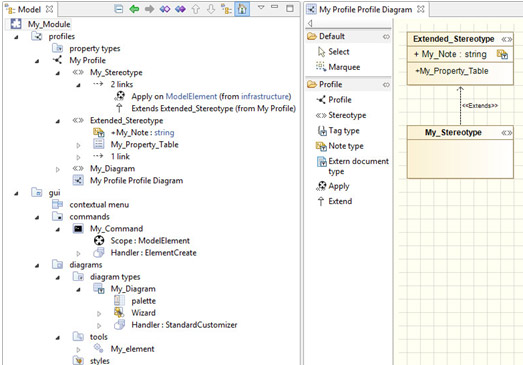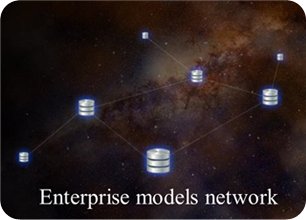Modeliosoft is proud to introduce our new Modelio 3.4 version, which still increases its benefits by bringing new exclusive features.
Modelio studio is a graphical tool dedicated to defining extensions for Modelio (modeling capacities, services …) without programming. Based on defining the elements hereunder, Modelio Studio generates « Modules » that package and disseminate the extension to Modelio Users.
Modelio Studio is part of Modelio Modeler version 3.4.

Figure 1 - Modelio Studio
Model driven development in Java with Modelio is an easy and intuitive practice for Java developers. The tool provides productivity and quality, helps with documentation and testing, handles existing and new code, and maintains permanent model/code consistency. Developers still have the freedom to use their favorite IDE (such as Eclipse), while getting the benefits of modeling support.
Modelio (previously Objecteering) is a tried and tested solution, helping developers to maintain model/code consistency since 1996.
Modeling systems or software requires more than graphical modeling capacities, in order to handle the richness of model's data: detailed information, extensible data, ...
Modelio already supports spreadsheet editors, which enable table's views and editions of model elements, such as requirements, or any other model element (classes, processes, use cases, ...). Matrixes are also a convenient means to represent traceability, or any other properties or links.
Now Modelio 3.3 provides a rich HTML text editor (see Figure 1) that enhances generated web documents. Modelio also provides for the main modeling elements dedicated forms (see Figure 2) that provide a methodological help in capturing models. Use Cases or Business Processes are example of model elements having a dedicated form.


Federated repositories under « Constellation »
Models in an Enterprise are parceled between different repositories, tools or Business Units. That model separation hinders the exploitation, the generalization and the reuse of models. The knowledge asset (models, processes, data, architectures, systems) is therefore poorly shared and exploited.
The new Modelio Constellation tool ensures the models and projects governance, as well as their centralized administration, the setting of indicators and procedures, and the setting of automated tasks such as reports, audit, code generation or continuous integration. Constellation organizes and ensures the sharing of models within and between organizations, even for the most heterogeneous ecosystems. The web administration interface provides a convenient tool to manage and get a synthesis of projects.
Lire la suite : Webinar video - Model governance within enterprises

Thursday, November 20, 2014 (17h - 18h CET)

Federated repositories under « Constellation »
Models in an Enterprise are parceled between different repositories, tools or Business Units. That model separation hinders the exploitation, the generalization and the reuse of models. The knowledge asset (models, processes, data, architectures, systems) is therefore poorly shared and exploited.
The new Modelio Constellation tool ensures the models and projects governance, as well as their centralized administration, the setting of indicators and procedures, and the setting of automated tasks such as reports, audit, code generation or continuous integration. Constellation organizes and ensures the sharing of models within and between organizations, even for the most heterogeneous ecosystems. The web administration interface provides a convenient tool to manage and get a synthesis of projects.
Lire la suite : Free webinar - Model governance within enterprises